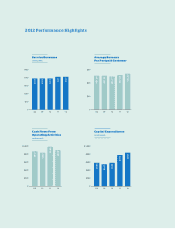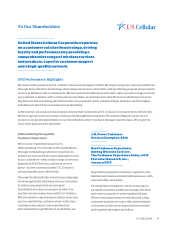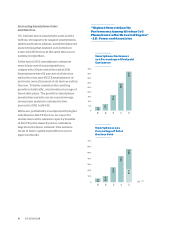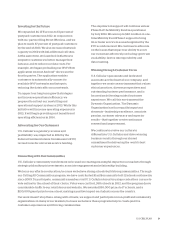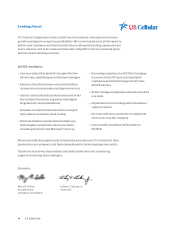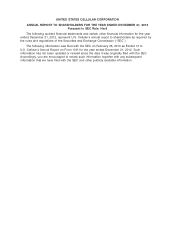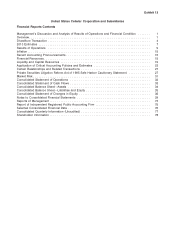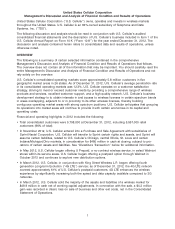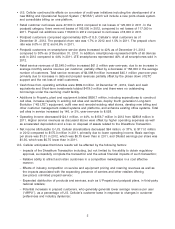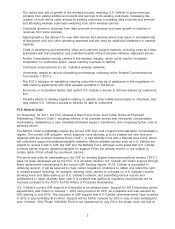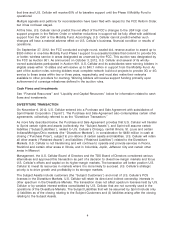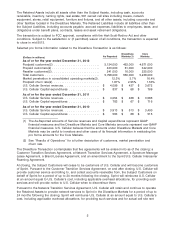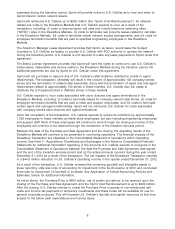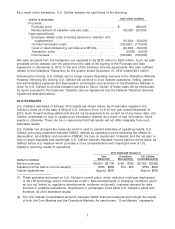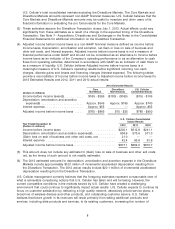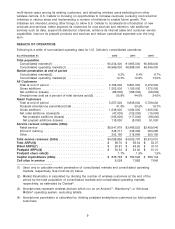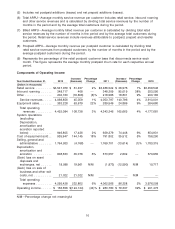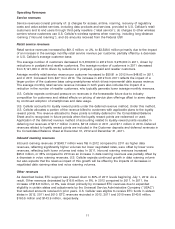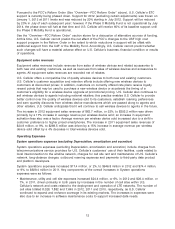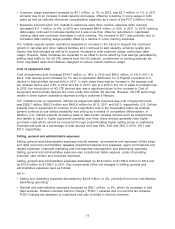US Cellular 2012 Annual Report Download - page 11
Download and view the complete annual report
Please find page 11 of the 2012 US Cellular annual report below. You can navigate through the pages in the report by either clicking on the pages listed below, or by using the keyword search tool below to find specific information within the annual report.– The nature and rate of growth in the wireless industry, requiring U.S. Cellular to grow revenues
primarily from selling additional products and services to its existing customers, increasing the
number of multi-device users among its existing customers, increasing data products and services
and attracting wireless customers switching from other wireless carriers.
– Continued growth in revenues from data products and services and lower growth or declines in
revenues from voice services;
– Rapid growth in the demand for new data devices and services which may result in increased cost
of equipment sold and other operating expenses and the need for additional investment in network
capacity;
– Costs of developing and enhancing office and customer support systems, including costs and risks
associated with the completion and potential benefits of the multi-year initiatives described above;
– Further consolidation among carriers in the wireless industry, which could result in increased
competition for customers and/or cause roaming revenues to decline;
– Continued enhancements to U.S. Cellular’s wireless networks;
– Uncertainty related to various rulemaking proceedings underway at the Federal Communications
Commission (‘‘FCC’’);
– The FCC’s adoption of mandatory roaming rules which may be of assistance in the negotiation of
data roaming agreements with other wireless operators in the future;
– Economic or competitive factors that restrict U.S. Cellular’s access to devices desired by customers;
and
– Possible effects of industry litigation relating to patents, other intellectual property or otherwise, that
may restrict U.S. Cellular’s access to devices for sale to customers.
FCC Reform Order
On November 18, 2011, the FCC released a Report and Order and Further Notice of Proposed
Rulemaking (‘‘Reform Order’’) adopting reforms of its universal service and intercarrier compensation
mechanisms, establishing a new, broadband-focused support mechanism, and proposing further rules to
advance reform.
The Reform Order substantially revises the current USF high cost program and intercarrier compensation
regime. The current USF program, which supports voice services, is to be phased out over time and
replaced with the Connect America Fund (‘‘CAF’’), a new Mobility Fund and a Remote Area Fund, which
will collectively support broadband-capable networks. Mobile wireless carriers such as U.S. Cellular are
eligible to receive funds in both the CAF and the Mobility Fund, although some areas that U.S. Cellular
currently serves may be declared ineligible for support if they are already served, or are subject to
certain rights of first refusal by incumbent carriers.
The terms and rules for participating in the CAF for wireless eligible telecommunications carriers (‘‘ETC’’)
have not been developed yet by the FCC. It is uncertain whether U.S. Cellular will obtain support through
these replacement mechanisms to the current USF funding regime. If U.S. Cellular is successful in
obtaining support, it will be required to meet certain regulatory conditions to obtain and retain the right
to receive support including, for example, allowing other carriers to collocate on U.S. Cellular’s towers,
allowing voice and data roaming on U.S. Cellular’s network, and submitting various reports and
certifications to retain eligibility each year. It is possible that additional regulatory requirements will be
imposed pursuant to the FCC’s Further Notice of Proposed Rulemaking.
U.S. Cellular’s current USF support is scheduled to be phased down. Support for 2012 (excluding certain
adjustments) was frozen on January 1, 2012 using support for 2011 as a baseline and was reduced by
20% starting in July 2012. The reduction in USF support that U.S. Cellular otherwise would have received
in 2012 is approximately $16 million. Support will be further reduced by 20% in July of each subsequent
year; however, if the Phase II Mobility Fund is not operational by July 2014, the phase down will halt at
3


